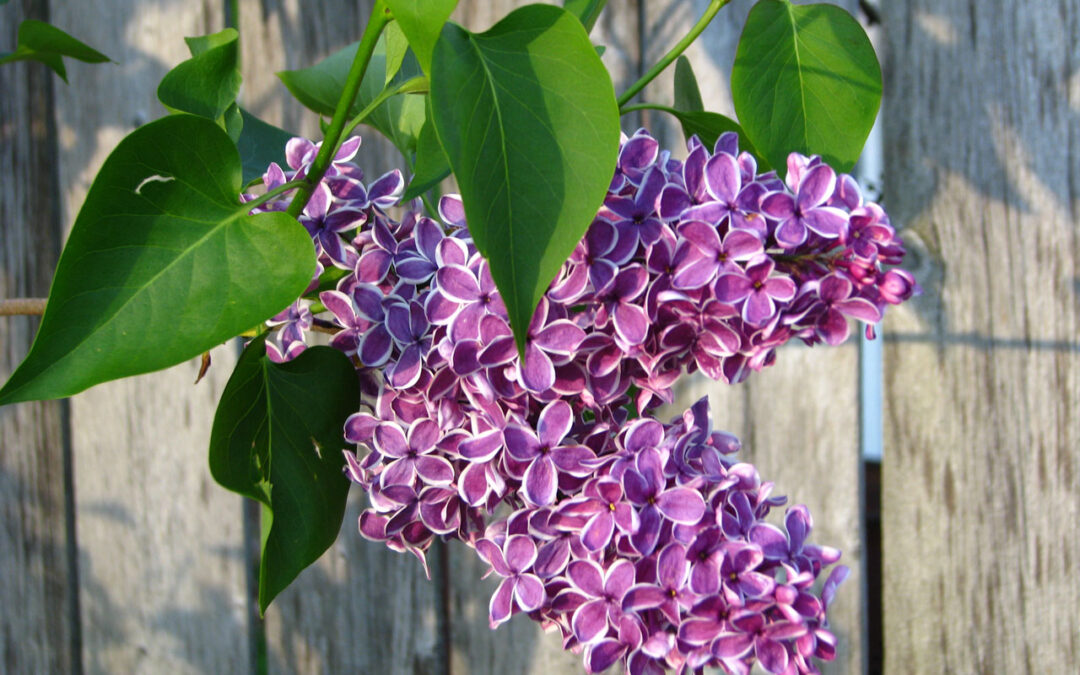One of the telltale signs of spring in northern Michigan is the sweet fragrant aroma wafting through the air of the blooming Lilac bushes. These hearty bushes produce a beautiful purple flower that is common in this region. Mackinac Island even hosts a Lilac festival each year. As we head into late April, a common question comes up: When should I plant my lilacs?
Lilacs are quite popular with local green thumbs as this hardy, low-maintenance shrub thrives in northern states because of the cooler summers. The strongly scented flowers bloom typically in late May and when added to your garden, will attract pollinators such as hummingbirds and butterflies. Lilacs come in many varieties, but the common Lilac (Syringa vulgaris) grow 12-15 feet high and 10-12 feet high. Lilac bushes can last for decades in your garden and the blooms make excellent cut flowers for indoors. The cut blooms will last 3-5 days in a vase with fresh water and allow you to bring the scent of springtime into your home.
So, when should I plant them? Well, part of that decision depends on how cold winter was and what stage of dormancy the plant you buy is in. When purchasing a dormant plant (no leaves showing) whether it is potted or just a bare root, you just need to be able to get into the ground easily. When we have a harsh cold winter, you may have to wait until late April before planting. A mild winter can lead to the ground thawing earlier, allowing you to plant in early April.
In either case, you’ll want to “test” your soil first. With Lilacs, you don’t want to be planting, tilling or manipulating the soil when it is wet.This could be from a recent rainfall, thawing snow or even morning frost melting off. Digging around in wet soil damages its physical structure causing it to be clumpy and not root friendly. Grab a handful of soil and making a fist, clump the soil into a ball. When you release your grip, if the soil falls apart,it is sufficiently dry and good to work with; Good to plant the lilacs. If it stays in a ball, then the soil still has too much wetness and you’ll need to wait for the ground to dry out more before planting. Remember a dormant plant will not be affected by cold temperatures, so as soon as your soil is workable, you can plant. If you purchase an actively growing plant (already has leaves growing) from your local nursery, then you definitely want to wait until the chance of a hard freeze have entirely diminished. A hard freeze will kill the foliage, so generally waiting till mid-May to plant is best for actively growing Lilacs.
You’ll want to choose an area that gets at least 6 hours of sun per day and has well drained soil. An area with good air circulation can also help prevent the build up of a powdery mildew. Ideally, not planting over a grassy area is ideal. Lawns tend to get regular watering and fertilizer. The nitrogen in fertilizer is bad for Lilacs and they don’t like over watering. Once the root system has been established, water about once a week in dry conditions and more if there is extreme heat.


Recent Comments